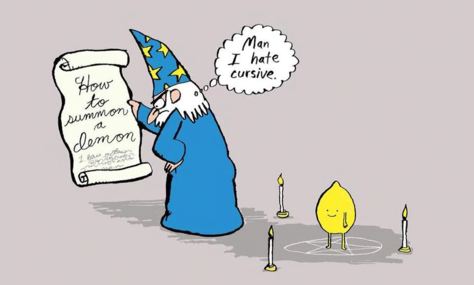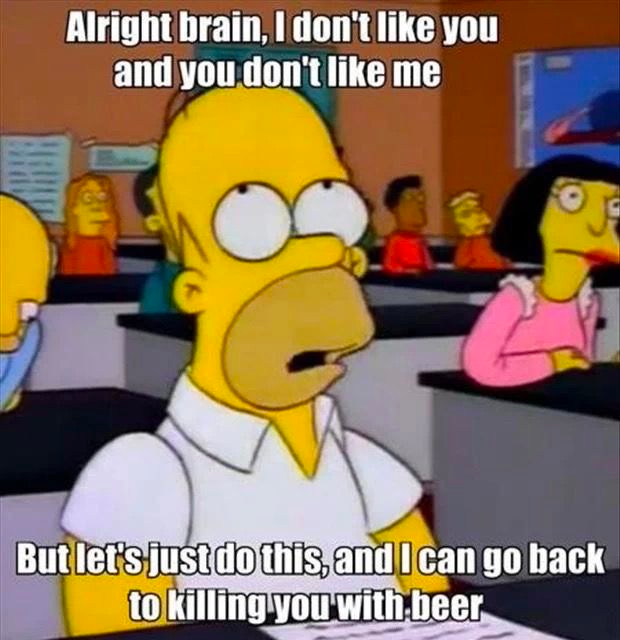Visualization
I’m straight up not gonna lie; visualization is a superpower, a magical spell, a gift bestowed from the Gods, and today I’m going to share with you how to use it in all areas of your life. But first: why does it work?
Stoopid Brain
Your brain takes care of a lot without your intervention. Breathing, making your heart beat, regulating bodily functions, etc. It also is busy solving problems while you are focused on something else (think about those brilliant ideas you get in the shower). It’s also responsible for your dreams, fantasies, and even nightmares as it weaves various bits of data it has seen or heard about into a story.
Despite all the great things it does, it has one weakness: your subconscious brain can’t tell the difference between reality and fantasy. Only the outer layer of your brain can do that. And we can make this little piece of information work for us.
Setting The Stage
To take advantage of this, you need to visualize the thing you want to happen and you need to do so consistently with enough time for the changes to occur. For example, if your current deadlift is 200 pounds, rolling off the couch, brushing the Cheetos dust off of your gut, and visualizing lifting 500 pounds while reaching for the barbell isn’t going to work.
Sorry.
But! If you hope to do the Murph workout next Memorial Day full Rx with a weight vest: you’re in luck. Each day before going to the gym, spend 5 minutes visualizing that day. Imagine it in as much detail as possible: think about what the weather will be like, what you’ll be wearing, the music, and how excited you will be as you accomplish your goal. Engage as many of your five senses as you can. With consistency, your subconscious brain will not know the difference and assume that this is how it is. Your body will then start making subtle changes in how you perform to meet the expectations of what your brain believes to be true.
Put It Into Action
I won’t tell you what limits you can put on this (and you shouldn’t either). I will tell you, though, that you should be very specific. Don’t say “I want to be in shape”, say “I am at 15% body fat, back squat twice my body weight, and feel great.” Whatever you visualize has to be measurable so that your brain can accurately make the necessary adjustments. And again, when you say that statement to yourself, think about how you’ll look. Picture yourself doing the perfect back squat. Hear the sound of the PR bell as you ring it. Feel your gratitude and pride in accomplishing your goal as you see everyone congratulating you.
Where It Applies
You can use this in other areas of your life besides physical fitness. The only requirement is that you can visualize it. Money, food, fame, sex, it doesn’t matter. It also is highly effective at short-term tasks, such as your next 60 minutes of gym workouts.
Once you know what the WOD is, think about how you will do it. For example, let’s say there are back squats in the WOD. You hate back squats, and you suck at them. Period.
Well, that’s not an empowering thought.
Instead, acknowledge that you suck at back squats, then spend 5 minutes visualizing what you would look like doing the workout if you didn’t suck at them. Picture yourself doing perfect reps. Look at the plates on the bar. See how your chest remains upright, and your heels stay on the ground for every rep. Think about how these perfect back squats also improve other areas of your life. The more places in your life you can “hook” the visualization to, the stronger it becomes. Doing so instructs your brain on what the desired outcome should be. Pretty soon, your back squats will start to look like your visualization.
One more place you can use this: micro-goals. When under extreme stress, you can’t focus on big-picture goals. You have to break it down into something achievable. I used to be a 24-hour mountain bike racer. For 24 hours, I would ride up mountains, over logs, through mud and snow, and off cliffs. There are times during a 24-hour race when you can’t visualize the race ending. Instead, I would visualize the sun coming up and the warmth it would bring. I would visualize the daylight lighting the trail instead of my little headlamp. When that seemed too far away, I would break the goal down smaller: I would visualize making one perfect circle as my foot pedaled around the crankshaft.
Perfect circle.
Perfect circle.
Perfect circle.
It didn’t matter that my foot was attached to a carbon fiber crank arm that could do no shape other than a perfect circle. It gave my mind a task, a desired outcome, and a means to accomplish it. With that in place, I could keep progressing and do my job.
Put It To Use
Think about your goals. No, I mean seriously think about them. What does your life look like once you’ve achieved them? Visualize that and let your brain know what the desired outcome should be. It doesn’t matter what your goal is. It doesn’t have to be world peace or ending world hunger. It only has to be important to you.
Today’s Tasks
Don’t forget to complete today’s tasks for the challenge.
- Drink 1 gallon of water
- Workout for 45 minutes
- Read ten pages from your book
- Stick to your meal plan
Once completed, head to the tracking site and mark them as completed to track your progress for the challenge. Tomorrow we continue the impact of physical fitness on our lives as we talk about the negative side of physical fitness.

